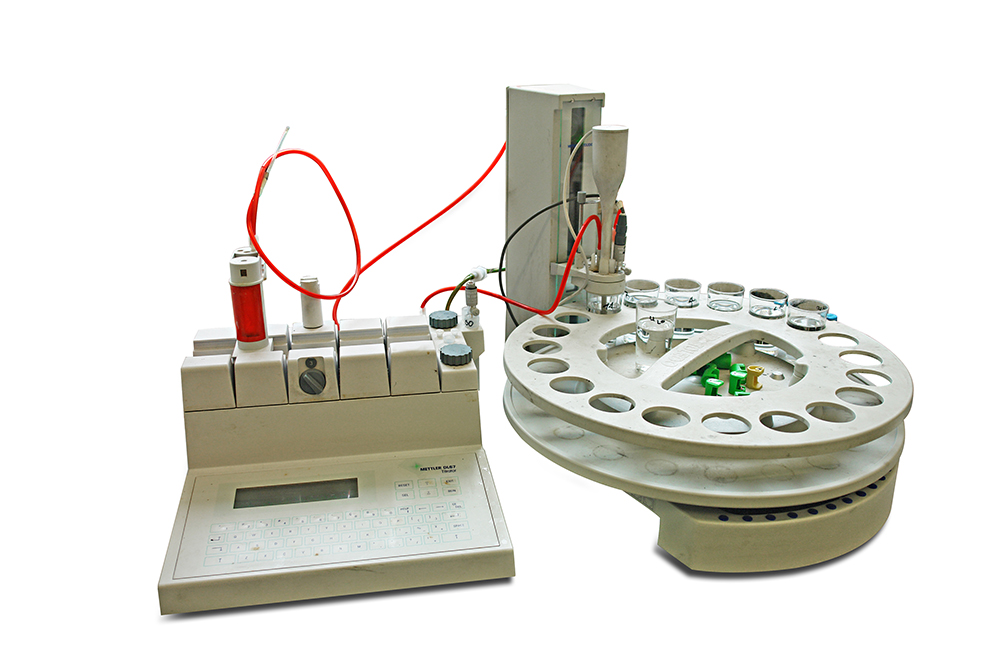Determination of acidic components in gas engine oils
Gas engine oils: Additional tests for preventing the oil from turning “acidic”
Gas engines are combustion engines which run on gaseous fuels such as natural gas, industrial, sewage or landfill gases from waste materials. Stationary gas engines are increasingly being used to operate combined heat and power (CHP) stations that burn landfill gases on site and can simultaneously utilize the waste heat for heating.
The combustion process of the gases produces acidic combustion products that must be absorbed and neutralized by the engine oil. If this is not successful, the strong and extremely acidic acids directly attack the engine.
Therefore, it is important to ensure a demonstrably high alkalinity and low ash content of the fresh oil when using gas engine oils. All samples of used gas engine oils must undergo specific tests next to the routine analysis. The reaction toward the acidic components of the gases and therefore the condition of the used gas engine oils can only be assessed objectively through these tests.
BN, AN and i-pH-value – three essential parameters
The BN, Base Number, is a measure of the content of alkaline additives in the oil. It describes the absorption capacity of the oil for the acidic components from the combustion gases which result from the combustion process. As a result, it is an essential criterion for how many acidic components can be neutralized and rendered harmless by the oil. The BN is provided in the laboratory report in mgKOH/g and is thus defined by the amount of potassium hydroxide (KOH) in mg, which corresponds to the neutralization capacity of the alkaline ingredients contained in 1 g of oil. Due to the acids to be constantly absorbed and high operating temperatures, the BN permanently decreases in the course of the oil's service life. If the BN falls under 60% of the initial value, this hints toward the deterioration of the oil concerning its capability of absorbing acid and an oil change is due quickly. Despite of a still detectable BN over the limit value, a landfill gas engine oil, unlike diesel engine oil, may contain acidic components that are not neutralized by the BN. This proportion of acidic components is determined with the AN, (Acid Number, Neutralization Number). The AN is the measure of the degree of acidification caused, for example, by acids as a result of landfill gas combustion. In the OELCHECK laboratory report, like BN, it is reported in mgKOH/g and indicates the number of mg of potassium hydroxide (KOH) required to neutralize the free acids contained in 1 g of dissolved oil. The AN should be well below the BN.
Another test should be done on oils that come from landfill gas engines that use widely varying gases or that come from an unstable landfill. Here, neither the BN nor the AN provide sufficient information on the proportion of acid condensates in the engine oil. The i-pH value (initial pH value) can be used to determine the initial pH value of the used oils. An i-pH value below 4.5 is to be considered critical.
In the case of oil, the pH value cannot be measured by an indicator paper as in a water sample. Therefore, a determination is made via an electrochemical reaction. This involves dissolving some oil in a solvent mixture containing small amounts of water. The initial pH value is read off via a calibrated pH meter after approx. 5 minutes of stirring.




